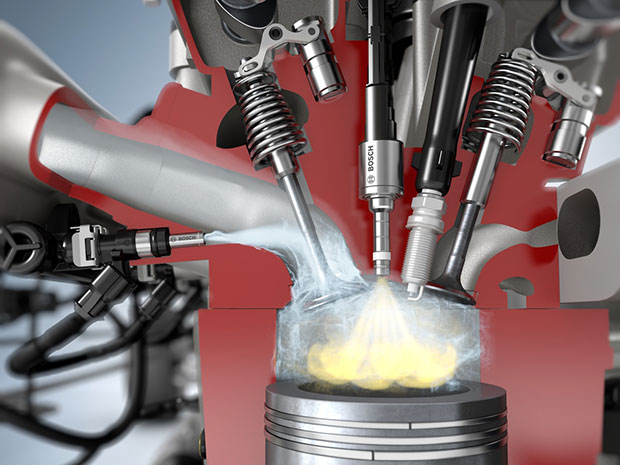Water Injection: Effects and Applications in Internal Combustion Engines
Anthony Klepacki
Advisor: Professor C.F. Lee
Abstract
Internal combustion engines have been extremely popular throughout the 20th and 21st century due to the convenience, efficiency and efficacy as a powerplant. In the past 40 years the Environmental Protection Agency (EPA, along with other governmental bodies and agencies in the United States, have put increasingly stringent regulations limiting the amount of emissions that can be emitted from both commercial and consumer vehicles. This has led to engine designers to utilize various new technologies to improve the efficiency, power output, and lower emissions from these vehicles. In this work water injection will the system of interest due to its relatively simple mechanism of action and promising results within the internal combustion engine design field. Research and development of both experimental and commercial implementations of this system have yield 20% reduction in CO emissions, 54% reduction in NOx emissions, 13% increases in fuel economy, and 5% increases in power. Unfortunately, as a by-product of the process unburnt hydrocarbon emissions have been increasing up to 30%. Limited implementation of this system currently exists in the consumer sector due to the lack of long-term studies and constraint of not being able to retrofit onto existing engine platforms. Water injection is still in the early stages of its development but has promising results from both the commercial and academic sectors, and the continued research and development will make it a very appealing engine technology.
Introduction
Internal combustion engines have been extremely popular throughout the 20th and 21st century due to the convenience, efficiency and efficacy as a powerplant. They have been the workhorse for the post-industrial revolution and the majority of the modern world relies on them for transportation, manufacturing, and power generation. As these engines become increasing prevalent in many industries, especially the automotive industry, more and more regulations are also set into place since these engines come at a price of pollution and emissions. In the past 40 years the Environmental Protection Agency (EPA, along with other governmental bodies and agencies in the United States, have put increasingly stringent regulations limiting the amount of emissions that can be emitted from both commercial and consumer vehicles. This has led to engine designers to utilize various new technologies to improve the efficiency, power output, and lower emissions from these vehicles.
In recent years there has been a large increase in the number of new technologies being implemented on the basic engine packed, aside from regular calibrations and baseline changes to the engine itself. These have been systems such as increased and more complex exhaust gas recirculation EGR, stratified charge combustion, and homogenous charge compression ignition (HCCI). All of these technologies, as well as other research and development systems, all contain the same goal, which is to keep increasing power output and efficiency without having to sacrifice for higher emissions and reduced fuel economy. In this work water injection will the system of interest due to its relatively simple mechanism of action and promising results within the internal combustion engine design field. The scope of this work will be limited to four-stroke and spark ignition (SI) engines. Water injection has been implemented and experimented with on two-stroke engines, as well as common compression ignition engines, but this is beyond the scope of this work, as more promising results have been in the afore mentioned setups.
Theory of Internal Combustion Engines
Four-Stroke Spark Ignition Engines
Internal combustion engines work on the premise of burning compressed pre-mixed mixtures of air and fuel (typically gasoline blends for SI engines). The four-stroke cycle work on four main principles of action, which are the intake, compression, combustion and exhaust phases of the engine cycle. This can be seen graphically in Figure 1.

Figure 1 - Diagram of a typical four-stroke engine cycle [1]
In the current study the interest lies primarily on the compression, power and exhaust strokes. More specifically this work is interested in maximizing the power created during the power stroke, as well as limiting the emissions created during the power and exhaust strokes. Water injection can target each of these parts of the engine cycle, but the most effective usage has been seen during the above-mentioned parts of the cycle.
Emissions
Due to the nature of combustion, perfect combustion in not achieved and products from the reactions are a definite part of the process. These emissions typically come under scrutiny by regulatory agencies since they have deep impacts on health, the environment and safety of the population in general. There are many types of emissions in SI engines, and they come in various quantities and effects. The most common type of automobile emissions, which are within the scope of this works, are NOx, unburnt hydrocarbon, CO and soot emissions [3].
NOx, or nitric oxide emissions are those caused by the combustion process, and especially when the fuel air mixture is combusted at high temperatures. These are dangerous by-products of combustion as they are very poisonous and detrimental to the health of humans. The NOx class of emissions is also an oxidizing agent, and this causes reactions to occur in the atmosphere with gases that ultimately causes more pollutants such as ozone, which is another detrimental class of emissions [2]. According to the EPA, most of NOx emissions come from the burning of gasoline, coming it at 28% of the total NOx emissions, with the second most being from on-road diesels (Figure 2). In the coming section on the applications of water injection it will be shown that NOx emissions can be drastically reduced by the usage of this technology.

Figure 2 - NOx contributors according to the EPA [2]
The second major class of emissions for SI engines are unburnt hydrocarbon emissions (UHC). These are directly related to the fuel used in these engines and especially when they do not actually take part in the combustion process. UHC are typically formed due to the non-ideal nature of combustion within a real engine. There are many sources for this such as crevice regions, wall quenching and due to oil layers inside the cylinder. The first, crevice regions, account for the majority of UHC emissions, since the crevice regions are small areas where fuel can become entrapped and thus removed from the combustion process, leaving it untouched until exhausts. Typical cylinders can see up to 5% crevice volume compared to the bulk cylinder volume, thus causing a great deal of UHC emissions. Wall quenching is caused by the heat transfer effects of the engine, where the fuel becoming attached or impinged onto the cylinder wall, thus quickly cooling down and become less able to burn properly. The final contributor to UHC emissions is the oil layer, where fuel can be become diffused though the layer of lubricating oil on the cylinder walls though the high-pressure parts of the cycle, escaping combustion, and then being the released during the high-pressure blowdown period, thus finally escaping through the exhaust.
The last major class of emissions for SI engines are CO emissions which are also caused by the incomplete combustion of fuel. This is formed through a process known as ‘photochemical smog’ which the following reaction takes place to form CO emissions by not fully oxidizing:
CO + 2O2 + hν → CO2 + O3
These emissions are a large majority of the total emissions from SI engines (Figure 3) and along with NOx and UHC emissions cause great detriment to people and the environment. Along with being relatively poisonous, they also cause long term health effects such as respiratory and cardiac diseases, and can cause neurological damage as well. They not only affect humans, but animals and livestock, as well as plants and vegetation in the environment.
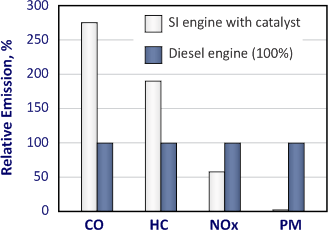
Figure 3 - Emissions contributors [3]
The last class of pollutants are soot and particulate matter (PM) emissions, but these are beyond the scope of this work. They are very prevalent in the compression ignition engine but are relatively controlled for SI engines, and thus are not a major issue. Many systems and technologies have been attempted and are currently being researched to reduce emissions, such as low temperature combustion or HCCI, but we will see that many of these effects can be achieved with water injection at a much lower capital cost and for a vastly reduced complexity.
Power, Efficiency and Performance
The main purpose of internal combustion engines is to produce power in one form or another, or in other words, to directly transmit power such as in the case of an automobile, or to be connected to another power plant such as an electric generator such as in the purposes of electrical production. The major gains of engines come from being able to extract every last bit of power possible, without sacrificing efficiency. The efficiency factor can come from various sources such as being fuel efficient or from the inherent efficiencies from the mechanism of action of combustion. Fuel efficiency is typically a very practical metric to use for internal combustion engines since the user always wants to get the most out of the engine without having to pay for the output.
Power and efficiency typically comes at a cost of emissions these days due to stringent regulations. Many automakers are looking into alternative technologies such as light weighting components to reduce the power needed from an engine, as well as being better able to utilize the available power through means of reducing mechanical losses.
Background and History of Water Injection
The first uses of water injection dates back to piston engine powered planes prior and during World War II. These planes used a small injection of water vapor into the intake charge to give a momentary boost of power during takeoff (Figure 4) or during elevated risk scenarios such as dogfights. In the earlier half of the 20th century many technologies were shared between the automotive and aerospace industry prior to the widespread introduction of the turbo-prop and jet engines for commercial, consumer, and military aircraft. It was not until the 1960’s that the advantages of a water injection system were experimented and test on consumer automobiles. This was first introduced on the Oldsmobile F85 in 1962, but this did not initially catch on due to the introduction of the turbocharger and the subsequent development of the intercooler. This diminished the appealing effects of water injection since an intercooler brought many of the same end results for a cheaper and simpler implementation. Recently, due to increased emissions standards, there has been a revitalization of water injection which will be discussed and explored further in the applications section below.

Figure 4 - ‘Wet’ Take-off of a KC 135 military aircraft [4]
Theory and Mechanism of Action of Water Injection
Basics
The basic premise of water injection is that a vaporized stream of water, or a similar liquid mixture, is injected alongside the fresh air charge. This is typically done in a similar fashion to port fuel injection, where fuel is directly added to the intake air mixture within the manifold prior to entering the cylinder. The following section will break down the process in chronological terms of a single engine cycle, exploring the effects and outcomes at each point.
When the water is first injected into the cold air intake charge, the water cools the air down further and this increases the density of the charge. This in turn increase the volumetric efficiency, which increases the overall efficiency of the engine. This is analogous to the same effects forced induction (e.g. superchargers or turbochargers), since those increase the amount of air entering the cylinder past what ambient atmospheric pressure could normally do. Once the water vapor mixture enters the hotter parts of the cylinders, as well as parts of the intake manifold which are heated through heat transfer from the cylinder, the water mixture evaporates further. The water thus absorbs a great deal of heat from the engine and reduces the temperature of combustion, as well as makes the intake mixture leaner. This has implications on the formation of NOx and CO emissions since the lower temperature is less conducive to the formation of those substances, as explained in the section above.
The reduced temperature effects also have direct implications on the risk of knocking the engine. For an SI engine the worst-case scenario is when the engine is running at low load and at high temperatures. Since most of the power output from an engine is typically associated with higher temperatures this means always increasing the potential to damaging the engine with a risk of knocking, which is an unexpected and uncontrolled auto-ignition of the fuel within the cylinder. This can cause damage and power losses in the engine since it since the erratic rises in pressure can over-stress engine components and lead to irreversible damage, and the misfire causes loses of potential work and increased emissions.
Finally, the last part of the water injection cycle is that once the water reaches a critical droplet size due to vaporization and atomization due to the injection and heat transfer process, and reaches a high enough temperature due to in-cylinder pressure it finally vaporizes into steam. This causes the mixture to expand greatly and creates extra work in addition to the combustion process. The conversion of potential lost energy due to heat transfer losses are recovered through water injection, and increase the overall efficiency of the engine since losses are minimized.
The preceding section explored the basic form of the water injection process in a four-stroke SI engine, but various alternatives have been explored and researched over the past few decades. The first major alternative is direct injection of water into the cylinder, similar to gasoline direct injection (GDI), but the effects are different as this target the late combustion and exhaust stage to reduce exhaust temperatures. The other main alternative, as mention before, is that pure water is the baseline mixture that can be used for water injection. Other hybrid mixtures, such as those containing a mix of water an alcohol have also frequently been used with trace amounts of water soluble oils. In this mixture the alcohol acts as an additional combustion agent, which creates extra work during the combustion cycle, as well as an anti-freezing agent since frozen water can expand and damage engine components. The small amounts of water soluble oils aid in corrosion resistance since many engine components could potentially quickly deteriorate in the presence of pure water.
Emissions Effects
The water injection process has implication on the creation of emissions and pollutants at each stage of the process described in the preceding section. The first major contributor is on NOx and CO emissions. The main mechanism of reducing these emissions are the lower temperature and heat transfer effects of having water within the intake and mixture charge entering the engine. As explained in the section on emissions and the mechanism of formation, many of these effects can be greatly diminished with lower temperature combustion. Since this typically is associated with a loss of efficiency and power, the effects are mitigated since water injection typically comes with an addition of power, creating an overall advantage to the system. It can be seen in Figure 5 that CO emissions can be reduce up to 20% and NOx emissions, in figure 7, can be reduce up to 54% by utilizing water injection, as compared to an identical engine without water injection in a baseline study.
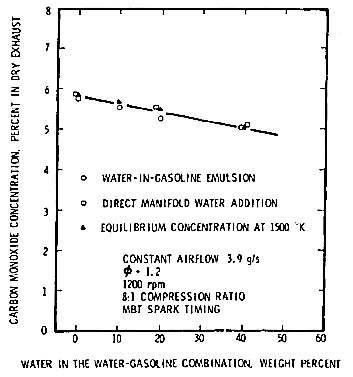
Figure 5 - CO Emissions with water injection compared to a baseline study [5]
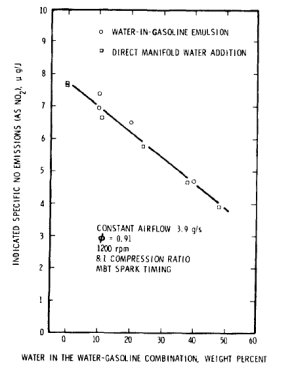
Figure 7 - NOx Emissions with water injection compared to a baseline study [5]
The main disadvantage comes at a cost of UHC emissions since these are typically increased when adding a water injection system. Figure 6 shows that UHC emissions can be increases up to 30%, as compared to a baseline case. While the past half century has brought down the amount of hydrocarbon emissions by a few orders of magnitude (Figure 8), current engines are typically design to the limits of allowable emissions so any increase in UHC emissions would make then illegal per current regulations.
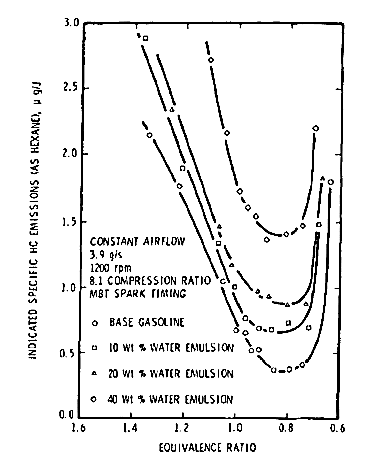
Figure 6 – UHC Emissions with water injection compared to a baseline study [5]
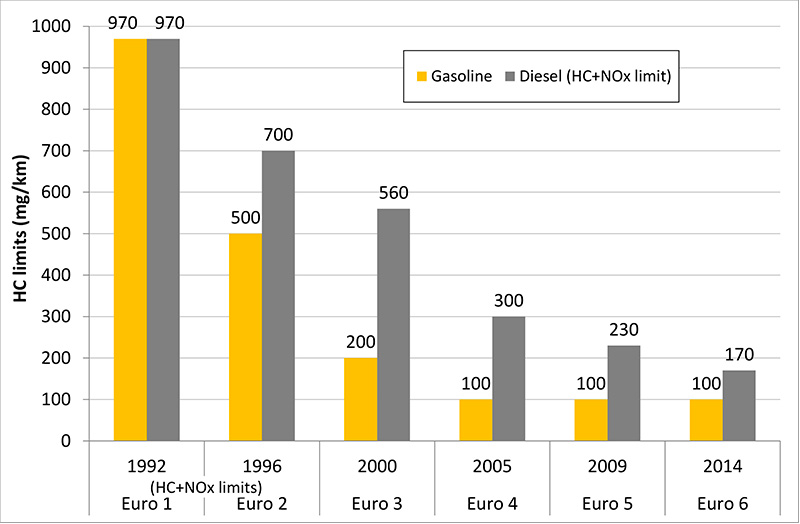
Figure 8 - Hydrocarbon Limits over the past three decades [6]
Power and Efficiency Effects
Aside from the benefits of the reduction of certain emissions, the water injection system also increases power and efficiency of certain parts of the engine operating regime. Water injection is typically used in full-load and high-speed situations, since this is where increase power is usually sought after. Studies have shown that increases in power of up to 5% can be achieved at these conditions, making them appealing for certain industries [6]. In addition, since water is added to the mixture without a reduction of power this create a leaner mixture charge thus improving fuel efficiency. In various research and development in commercial applications fuel economy has been improved up to 13%, compared to a pure gasoline mixture, with even higher improvements seen in research settings.
Usage and Limitations
While this technology has been heavily researched within the engine community over the past decade it has not been actively researched and developed within the commercial engine industry until the past decade. Most recently the technology has been popularized on the BMW M4 sports car platform with the power and efficiency effects mention above. This technology was co-developed with Bosch Mobility solutions but since has been independently developed further but Bosch and marketed to other automakers. There are many limitations to this system, such as the increase complexity of the system, as well as not understand the long-term effects of it. Finally, the increase of UHC emissions makes this impossible to implement commercially with current governmental and environmental regulation on gasoline engine emissions.
The main limitation for the development of this system is that it has not been successfully retrofitted onto existing engine platforms. This typically required a purpose-built engine which is highly detrimental to automakers and engine designers since the additional research and development cost of a new engine platform can outweigh the potential advantages of the water injection system itself. The main source of this is due to the routing and potential interference of water lines running near very corrosion-sensitive components of the engine. In addition, a water storage tank and high-pressure pump needs to be place near the engine to minimize hydraulic losses, but need to be sufficiently far away from the engine to not actively heat the water mixture, since it is contingent that the water be cool enough to work properly. Finally, water injectors need to be place properly on the intake manifold such that the water can be atomized into the intake charge. If it does not atomize sufficiently the mechanism of action breaks down due to a lack of heat transfer into the water. If the injector is place such that the injection stream impinges of parts of the valve system or the intake manifold the same problem exists where the water does not atomize or vaporize, and rather creates large droplets that interfere with the baseline internal combustion process for the engine (Figure 9).

Figure 9 - Physical visualization of the Bosch “Water Boost” water injection system [7]
Due to the increase emissions water injection has had limited success in the commercial consumer auto industry, but large portion of the motorsports industry has utilized this actively. This is due to the limited emissions standards in place for motorsports, and the effect of increase power is highly sought after since any additional power could push you past your competitor. Additionally, the heat transfer effects of water injection are highly beneficial in motorsports such as drag racing, since the engine operate at high load and temperature but for very short periods of time. Finally, water injection has not been proven to be effective in the long-term since corrosion can cause increased costs of engine maintenance, as well as unexpected damage to the water injection system itself due to additional components required to utilize it. This makes it a usable system in areas such as motorsports, since engine are constantly worked on and replaced with new and pristine components, but this is a major deterrent in the consumer automotive industry since maintenance and upkeep costs are a major consumer decision when choosing a car to buy, as these costs and quickly add up to a large portion of the original sticker price.
Conclusion
Water injection is a very promising technology with the evolving engine community, both in consumer and commercial settings. While alternatives to power generation are actively been explored, internal combustion engines are predicted to be the main workhorse of the industrial world for the foreseeable future due to the convenience relatively high-power generation density associated with it. As more regulations are imposed on automakers and engine design new technologies are constantly being explored past the basic calibration and engine development process since many incremental changes can add up to a robust and efficient engine platform. Water injection is still in the early stages of its development but has promising results from both the commercial and academic sectors, and the continued research and development will make it a very appealing engine technology.
References
-
‘4-Stroke Engine Diagram’, Quora, https://qph.ec.quoracdn.net/main-qimg-5bf2a26e66467098285e1a15538a4d37-c, 2017
-
“Nitrogen oxides (NOx) Control Regulations”, EPA, https://www3.epa.gov/region1/airquality/nox.html, retrieved December 2017
-
“What are diesel emissions”, Diesel Technology, https://www.dieselnet.com/tech/emi_intro.php, Retrieved December 2017
-
‘Wet Take-off KC135’, Wikimedia Commons, https://commons.wikimedia.org/wiki/File:Boeing_KC-135_J57_wet_takeoff.jpg
-
“Effects of Water Injection and Increased Compression Ratio in a Gasoline Spark Ignition Engine” Wilson et al. University of Idaho, February 2011
-
‘Light Duty Vehicles’, Associated for Emissions Control by Catalyst, AECC, https://www.aecc.eu/legislation/light-duty-vehicles/, Retrieved December 2017
-
“Squirts of Water Can Boost Engine Performance, Fuel Economy by 13%”, IEEE Spectrum, https://spectrum.ieee.org/cars-that-think/transportation/efficiency/squirts-of-water-can-boost-engine-performance-fuel-economy-by-13, September 2016
